How to kit out a greenhouse – experts share clever tips and tricks for making the most of your growing space
Maximize your growing endeavours with heating, water, and multi-level surfaces
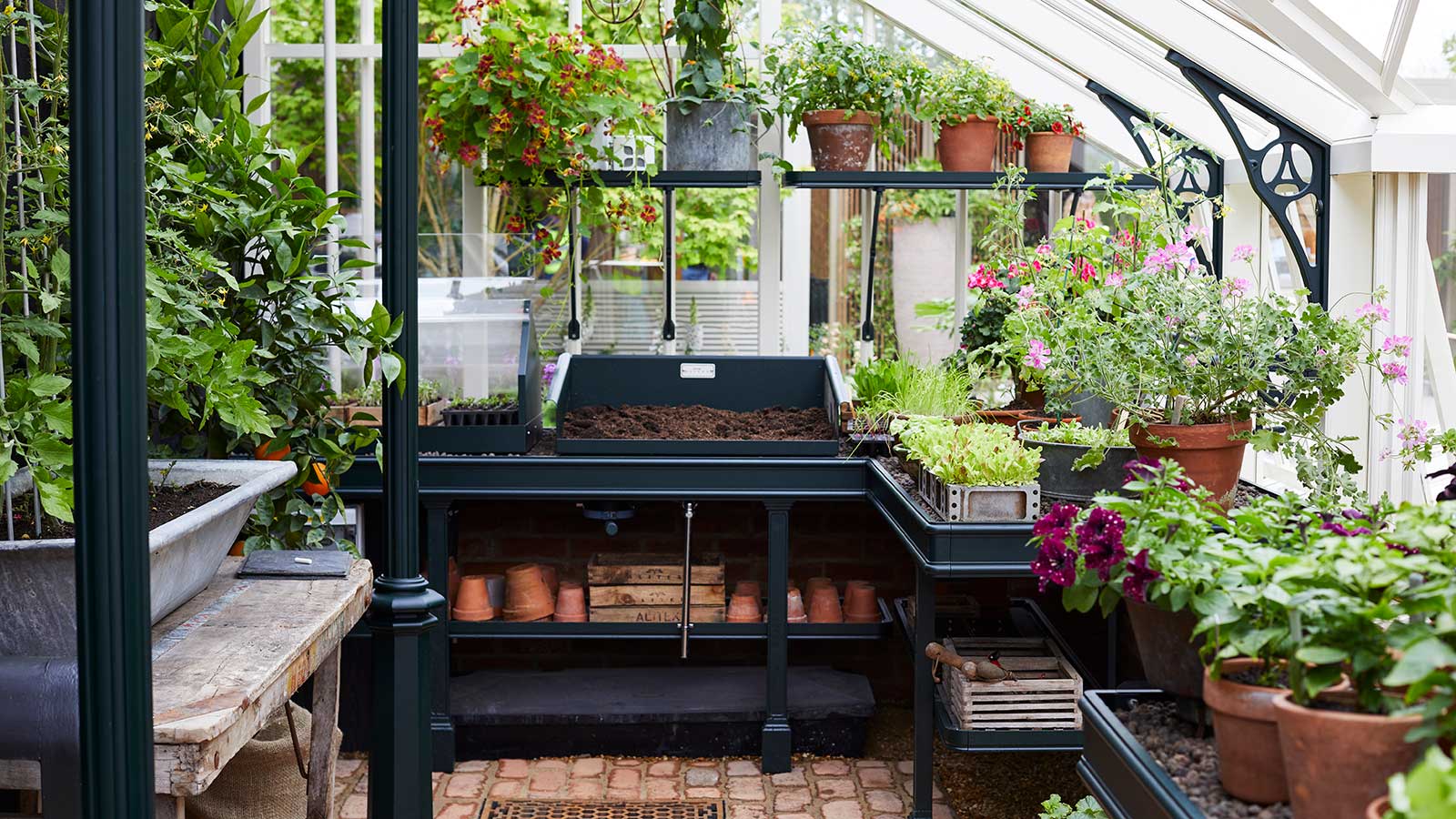

A greenhouse is such a useful addition to a backyard, whether you're an experienced gardener or a green-fingered novice. These sturdy structures provide a safe place to start seedlings, protect plants from winter chill, and grow crops that prefer a warmer climate. If you add a comfy seat and some homely touches, they can be a relaxing retreat to spend time in, too.
Whatever you plan to grow, a few clever greenhouse ideas will help you make the most of these spaces. A carefully considered layout, where everything needed is close to hand, will make it easy to find your flow as you nurture your precious plants. And there are some key pieces of equipment that will make it even easier to get successful results.
I asked experts in the field for their insights on how to kit out a greenhouse. From tips on water sources to staging, you'll find their advice below.
Turn up the temperature for starting seeds year-round

This propagator from Alitex will help seeds germinate
Adding a source of heat is a greenhouse trend that provides much more opportunity for growing throughout the year. You may want to invest in a plug-in heater, such as this one from Vivosun at Amazon, to keep the whole space frost-free, or you could keep things simple with a heated propagator.
Nelly Hall, brand director of Alitex, says a propagator is a fantastic piece of kit for kick-starting trickier seeds that need higher temperatures. Ones with heated mats mean you can keep the growing environment just right, and, as you're only heating the smallest area, it's an environmentally-friendly approach during the colder months.
'Sowing year-round really does give you a head start in your garden – be it flowers or veg,' Nelly says, adding that their Chelsea Flower Show stand in 2023 was all grown from seed in their greenhouses at Alitex HQ, to show what can be achieved.
Bear in mind that heated propagators need to be plugged into an electricity outlet, so one will need to be installed into your greenhouse if it isn't already. This will also enable you to explore options with greenhouse lighting, which will up the usability of your space.
Design expertise in your inbox – from inspiring decorating ideas and beautiful celebrity homes to practical gardening advice and shopping round-ups.
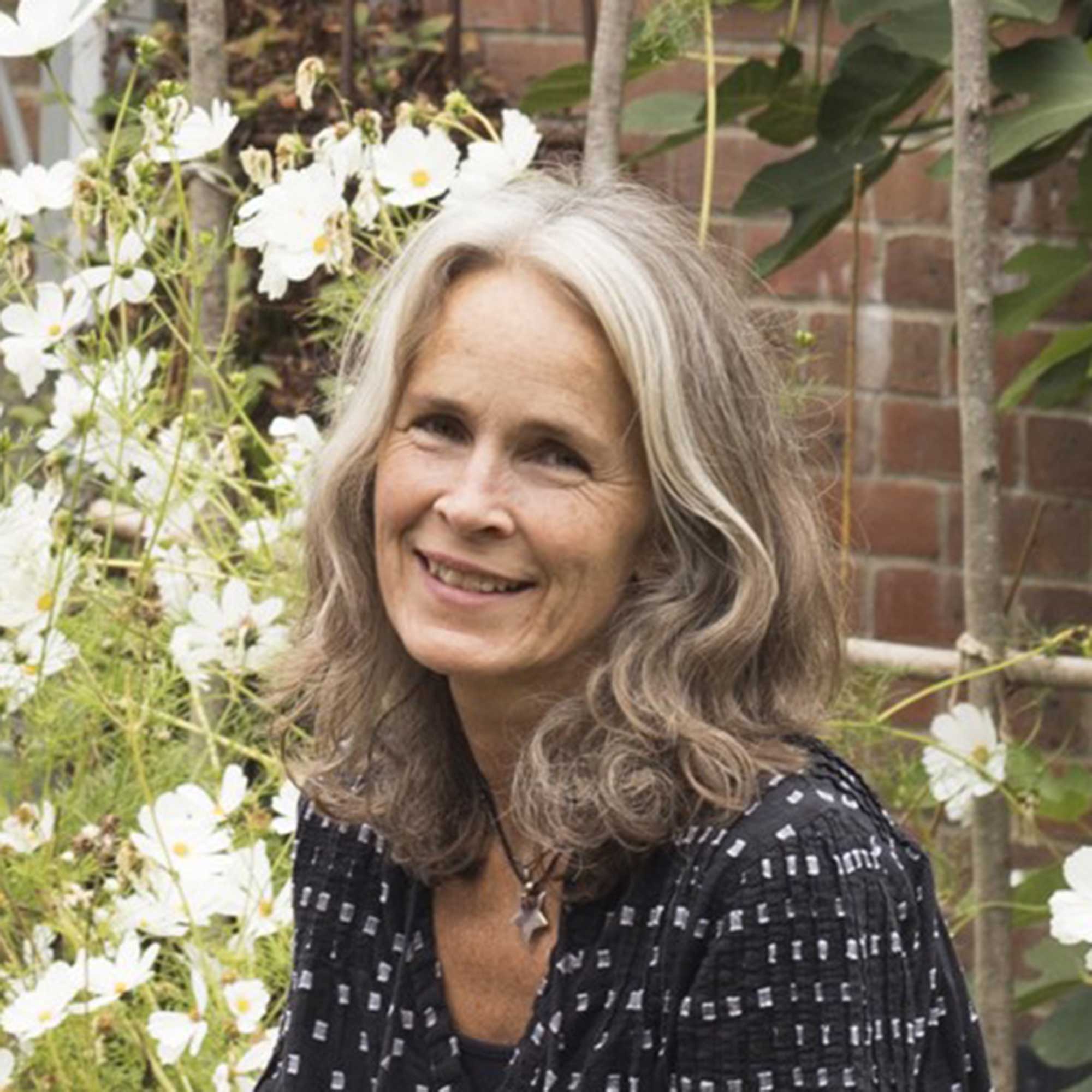
Nelly Hall, a passionate co-owner and creative brand director of Alitex Glasshouses, combines horticulture with creativity that runs through the heart of the business. She cultivates a culture of engagement and sustainability, ensuring Alitex is renowned for being authentic and experts within their field.
Get organized with growing stations at different levels
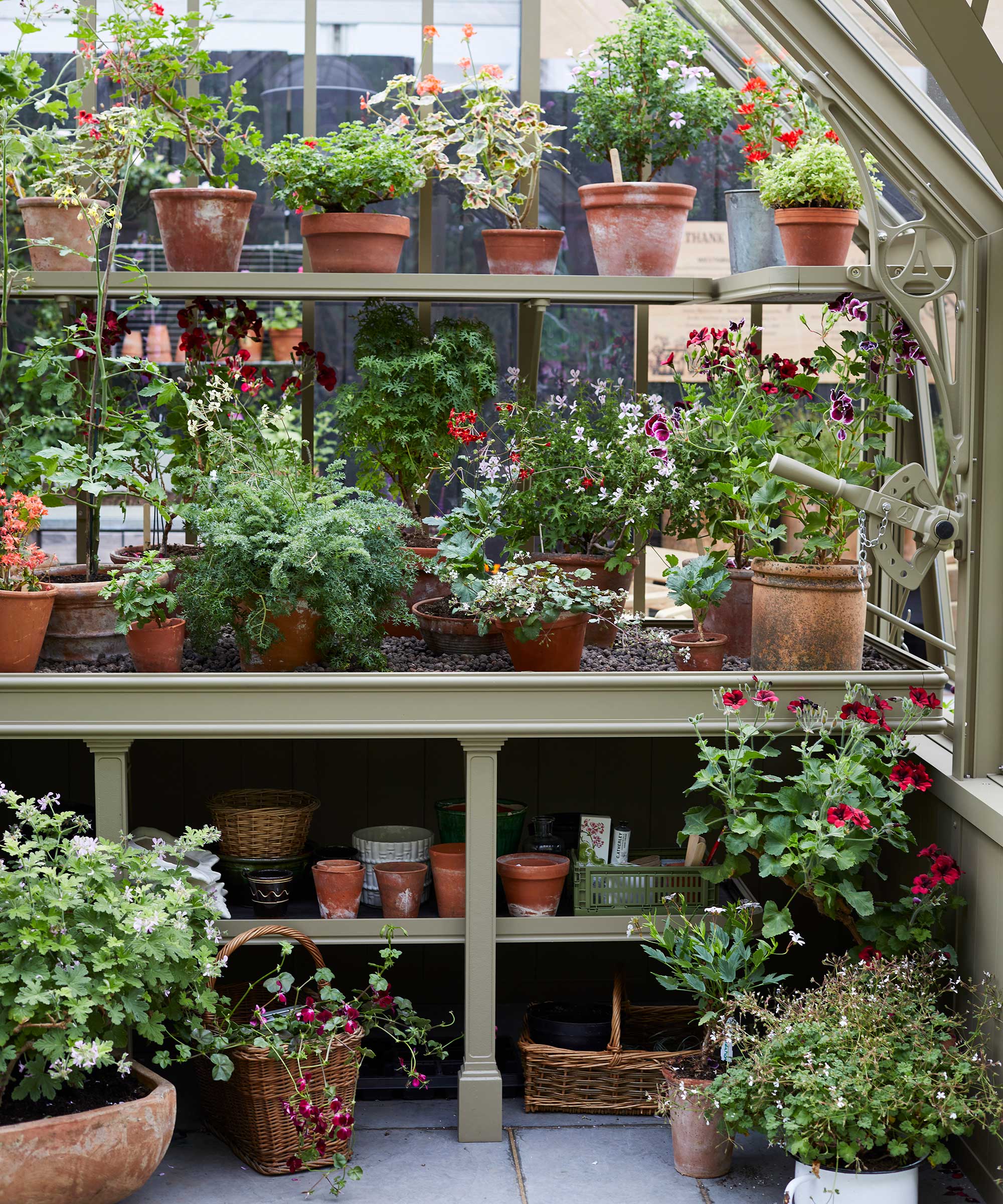
Shelving, benches, and storage provide plenty of room for plants and tools
If you intend to grow things like tomatoes and eggplants that thrive in a large pot, Nelly recommends building raised beds inside your greenhouse. However, for pretty much everything else, a combination of benching with eye-level strawberry boards (a type of high-level shelving) gives you great space for plenty of germinating, propagating, and display.
'I found last winter that I had a lot of mice visiting my greenhouse and hoovering up my seeds, but when I put them on the eye-level strawberry boards they were safe,' she notes.
For benching, she recommends a fixed design with a storage shelf underneath. And, to complement the ever-changing need for space, she suggests having a table or work bench that doubles up as a place for seed trays. She uses a folding metal table which can also be used for having lunch or coffee at.
Install a water source
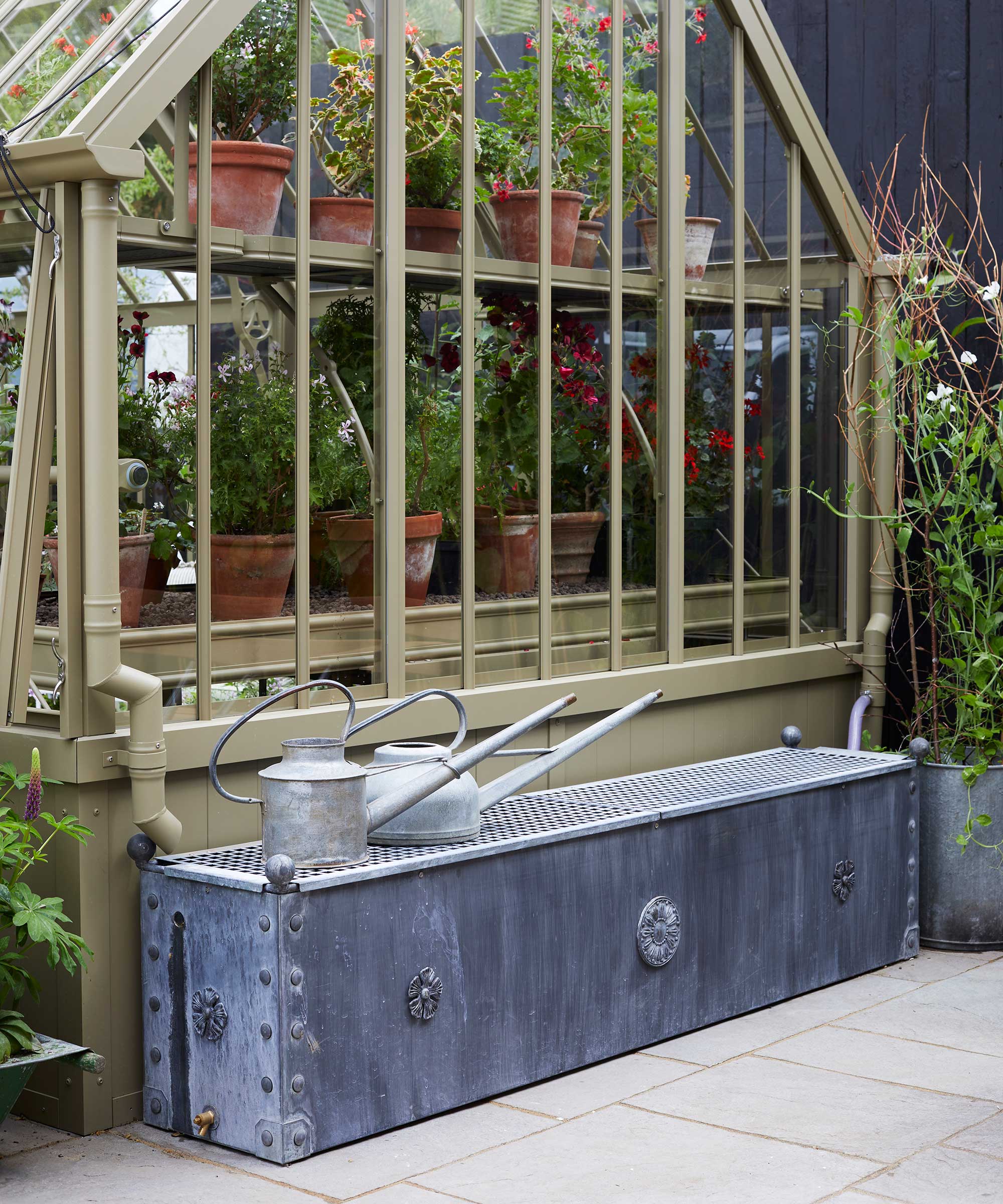
All plants need water to grow. If your nearest tap is at the opposite end of your backyard to your greenhouse, keeping everything hydrated can become a hassle.
Instead, consider an internal water reservoir, which Nelly calls an 'absolute must-have'. 'This is something we supply and fit right at the beginning of the project,' she says; 'that’s important, as the large 360-liter tank sits underground. Two downpipes feed into it through the base wall, taking in rain from the majority of the roof space. A pump is mounted just below the benching and is incredibly simple to use, giving you water at ambient temperature – particularly good during the colder months.
'If your greenhouse has a lobby that splits your gutter on one side, then one section of roof will be unable to run into the reservoir tank,' she continues. 'This is where adding a water butt makes sure you catch every last drop of rain.' Of course, you can add one of these, otherwise known as a rain barrel, even if you don't have an internal reservoir installed.
'My personal preference is a dipping tank for ease of use, and I think it sits nicely against a greenhouse wall,' Nelly continues. 'You can find a unique item to achieve this – an old tin bath or water tank depending on your preferred style, or something new.'
A mesh lid is great for keeping out leaves, branches, and reducing the chance of wildlife fatalities, she adds. To help prevent algae from forming in your rain barrel, remember to give it a good clean from time to time.
Andrew White of Rhino Greenhouses underlines the benefits of harvesting rainwater in your garden. 'Anything from downpipe conversion kits to water butts and irrigation systems help to minimize your water usage (great if you're on a water meter) and help you to protect the environment by reusing rainwater from the cooler months of the year,' he says.
'Rainwater collection is especially important for the summer months, when hosepipe bans are more likely and you need to keep anything stored in your greenhouse well watered.'

Andrew has nine years of experience in gardening-related topics and specializes in greenhouse growing and seed sowing. Andrew is head of sales and marketing manager at Rhino Greenhouses, so when he's not in his garden sowing the seeds for all manner of fruits, vegetables and plants, he is helping garden enthusiasts find the right products that fit their garden space.
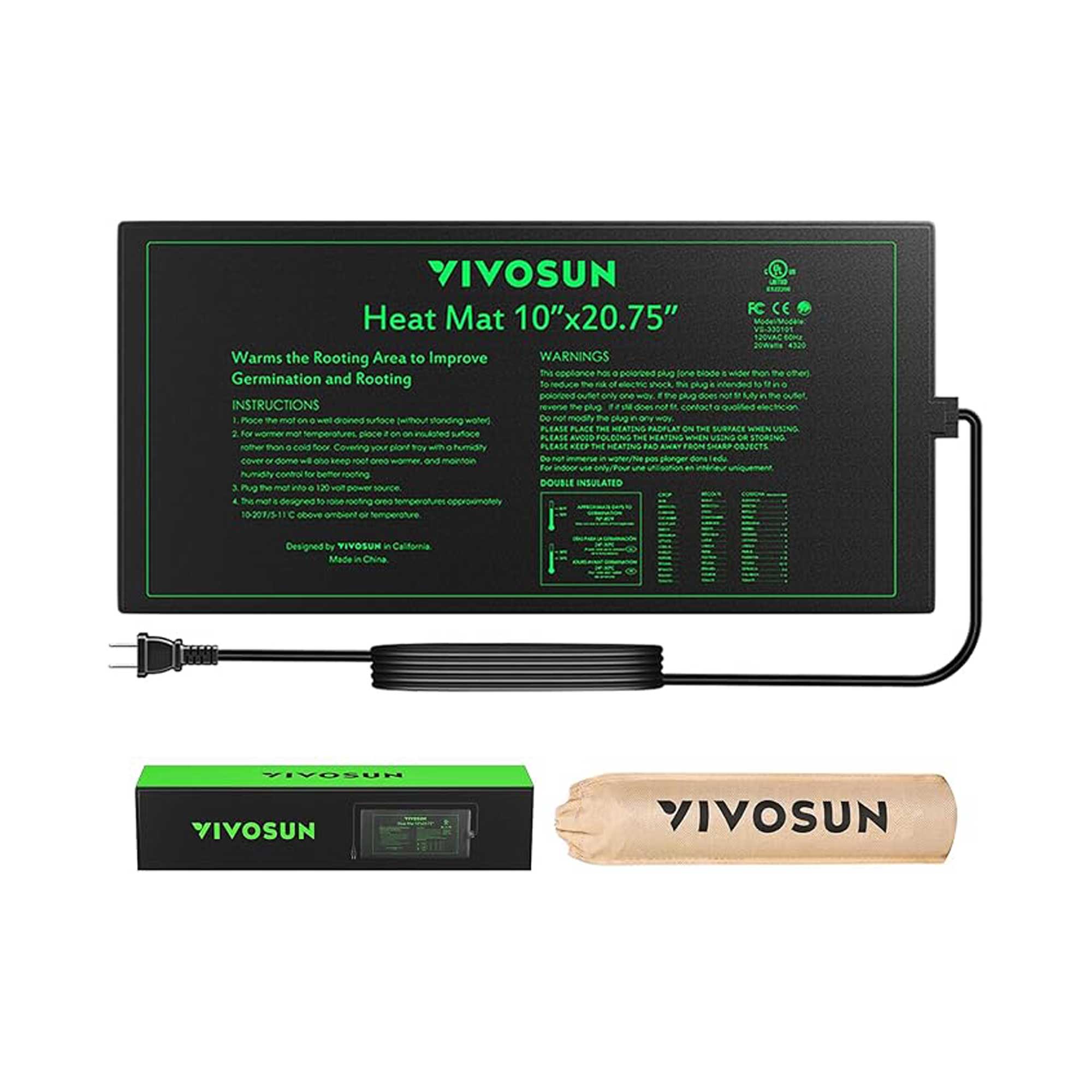
Get your seedlings and cuttings off to a strong start with this highly-rated heating mat. Simply pair with a seed tray and, for extra humidity, a propagation dome.
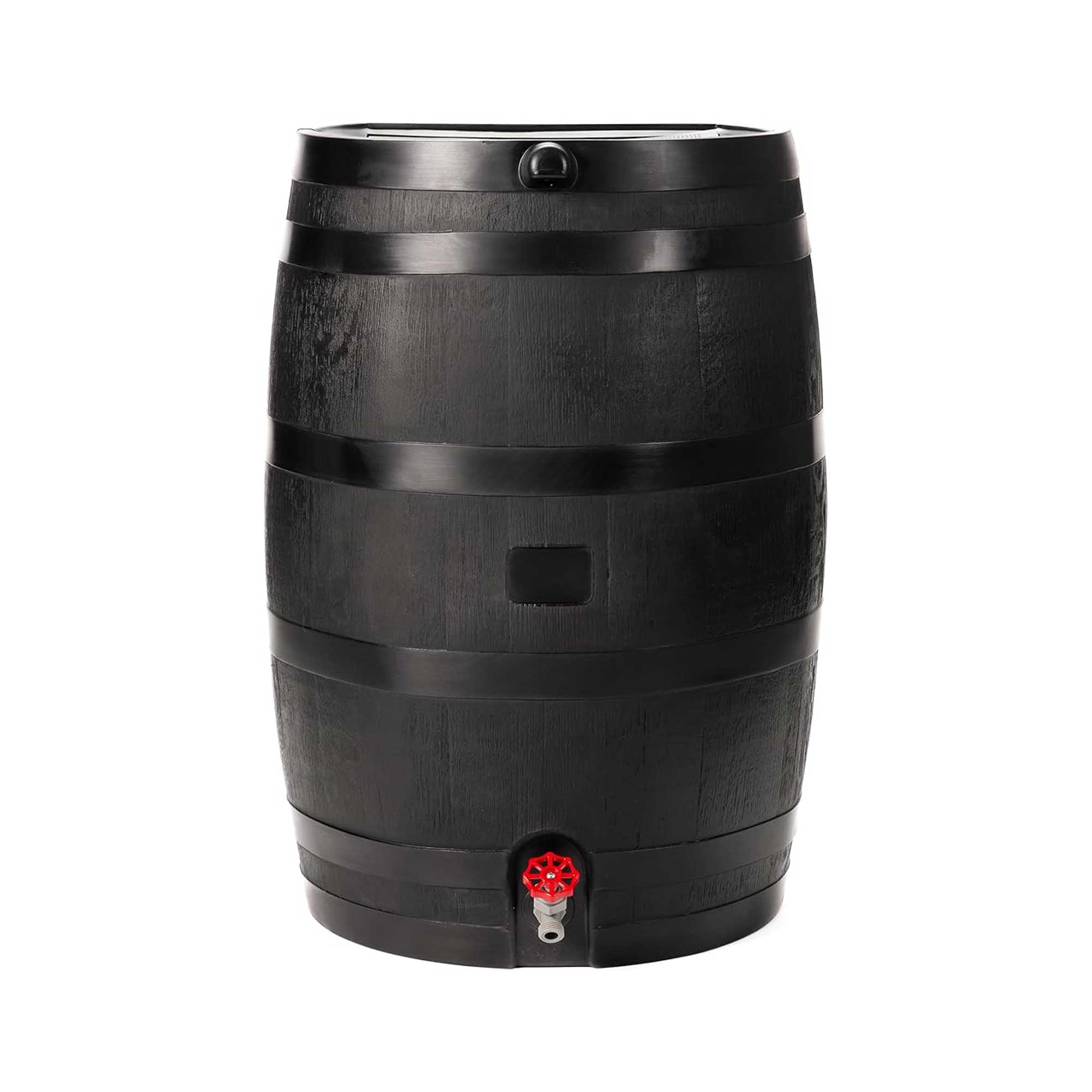
Made in the USA, this popular rain barrel has a flat back, enabling it to sit neatly alongside your greenhouse in a small space.

This table comes in four different sizes and is easily portable, whether you want to use it as an extra surface in your greenhouse or to take on your next camping trip.
FAQs
How should you zone a greenhouse?
'Where possible, try to break your greenhouse up into distinct zones to make things much more organized and easier to navigate,' recommends Andrew. He says you might have a storage area tucked away in a corner that doesn't get much sunlight, a potting area close to your tools, and then plenty of space ready to house all of your potted plants, for example.
How can you make the most of vertical space in your greenhouse?
Don't forget to really utilize the space up high. Andrew says they often see customers who have great workspaces and benches all the way around their greenhouse, but don't invest in staging and shelving to really maximize what they can fit in their greenhouse.
He also recommends making use of hooks where possible, which are great for storing garden tools.
Should you add blinds to a greenhouse?
Yes, according to Andrew. He says it's really important to have them in place in the summer months, as you'll want to minimize the strength of the sun that reaches your plants when temperatures get particularly high.
'Many greenhouse owners will opt not to invest in blinds, which can cost them dearly when temperatures do creep up, as plants can dry out too quickly or become scorched in particularly hot weather,' he warns.
As well as utilizing all the tips above, it's also key to keep your greenhouse clean and tidy. Like with any workspace, this will make it a more efficient and enjoyable place to spend time in.
'After a long day gardening and being out in your greenhouse, it can be tempting to leave things until tomorrow to clean up – though tomorrow never comes!' says Andrew. 'Keeping on top of your greenhouse organisation is essential to making sure your plants continue to thrive and no pests are introduced to your space. Along with this, it just makes the space much more usable for you all year round.'

Holly started writing about gardening five years ago, and she is a regular contributor to Homes & Gardens. She has also written many gardening features for Woman & Home and Real Homes, too. She has previous experience as a professional gardener, where she helped to plant and maintain private gardens. Holly has also looked after allotment plots over the years and loves to grow her own flowers and veggies from seed. In her spare time, she enjoys visiting local gardens, botanical drawing, and tending to her ever-growing collection of houseplants.
You must confirm your public display name before commenting
Please logout and then login again, you will then be prompted to enter your display name.